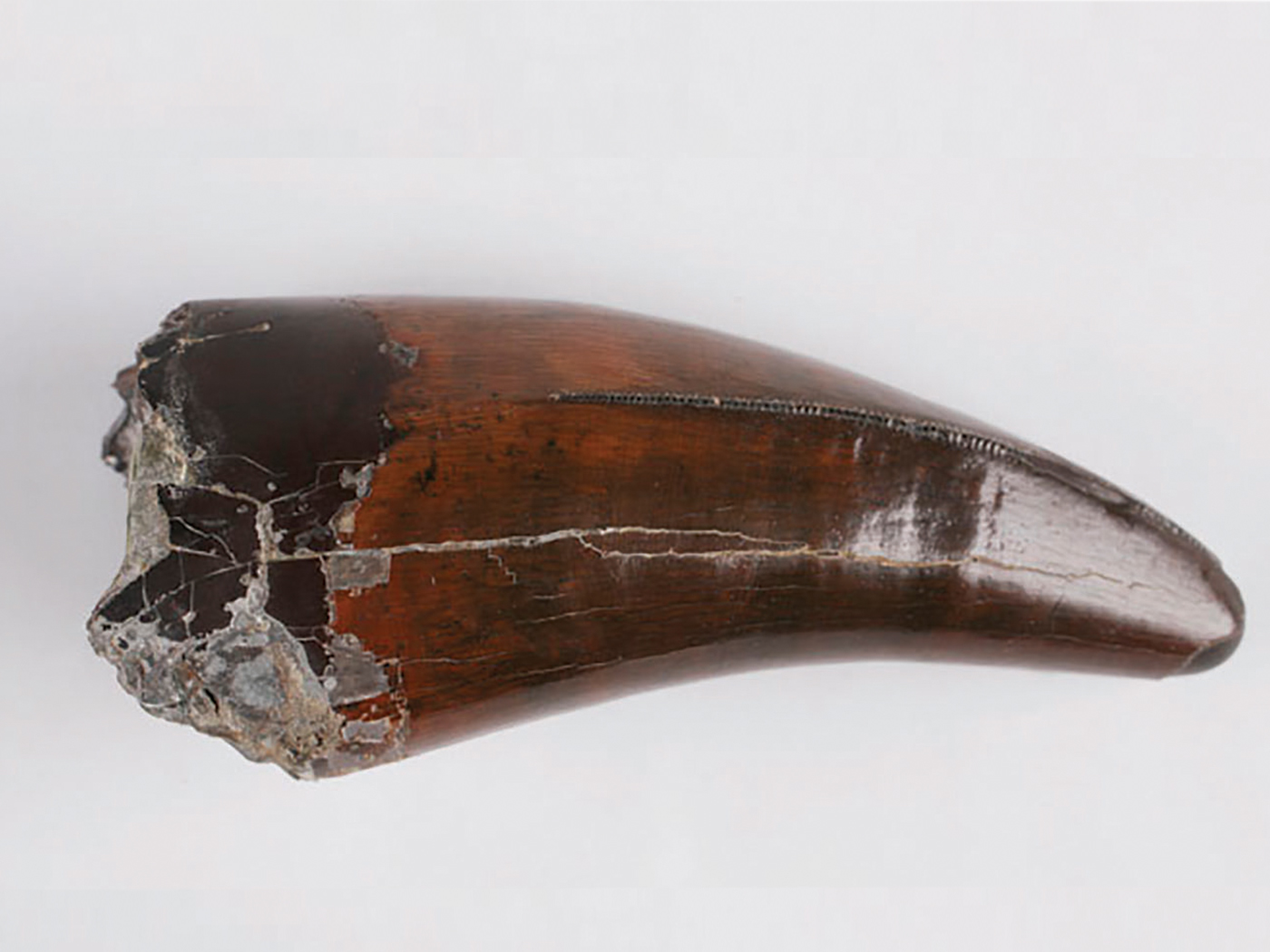One of the claims of Scripture most ridiculed by skeptics is the Bible’s matter-of-fact assertion that ancient people once lived for hundreds of years. Although creationists have already documented extrabiblical historical and cultural confirmation of this extreme longevity,1 scientific corroboration of this claim has been, till now, largely absent. Yes, creationists have made good arguments that this longevity is scientifically plausible,2,3 but scientific evidence that such longevity had actually occurred was harder to come by. We are pleased to say that this is beginning to change.
ICR research is revealing evidence within the fossils themselves that at least some animals once experienced much greater longevity than their modern-day descendants do. More than thirty years ago, creation researcher Greg Beasley deduced an important clue:
The fossilised remains of both flora and fauna are, as a rule, significantly larger in the past than in their extant counterparts. One possible explanation for this ‘shrinkage’ over time is that the growth potential of living organisms has been impeded through earlier maturation and declining longevity [Emphasis added.]; a consequence of changes in the prevailing biospheric conditions during the earth’s recent past. It is proposed that these changes were brought about by, and as a consequence of, geophysical, atmospheric and biological changes, initiated during the Flood. The writer proposes that morphological shrinkage is primarily a phenomenon of the post-Flood period, as was declining longevity and earlier skeletal maturation.4
Beasley suggested that greater longevity, larger adult body sizes (giantism), and delayed maturation were all linked together somehow.
The field of sclerochronology is beginning to confirm this creationist prediction.5 Sclero- means hard and chronology means an ordered history of events. Thus, sclerochronology is the study of an organism’s life history, as inferred by counting periodic bands within hard body parts, such as clam or oyster shells. Scientists can construct growth curves for populations of organisms (including fossil populations), enabling them to infer how an organism grows over time and to estimate its lifespan.
These growth curves are now providing “hard” evidence that at least some pre-Flood organisms were living longer, growing larger, and taking more time to mature than their modern-day descendants. Preliminary evidence for pre-Flood longevity is coming from the growth curves of oysters and other bivalves, sharks, and alligatoroids.
The skeptic will be quick to point out that increased animal longevity does not necessarily confirm greater human longevity. However, whatever mechanism or mechanisms in the pre-Flood world enabled extreme human longevity, they are almost guaranteed to have also affected the pre-Flood animal kingdom. Regardless of whether one thinks this extreme longevity was due to an absence of detrimental DNA mutations, different atmospheric conditions, or more abundant food, the extreme longevity would have also affected animals and perhaps even plants. Thus, evidence of greater longevity in pre-Flood animals is indirect evidence for greater human longevity, and vice versa.
Delayed maturation makes good sense of the biblical data. The earliest age at which a Genesis 5 patriarch is listed as having a son is 65. Admittedly, we do not know if the sons listed in Genesis 5 were all firstborn, but it seems likely that at least some of them were. So, were pre-Flood humans becoming sexually mature at about 13 years old, like today, and all simply choosing to wait 50 years (or more!) to get married? That seems extremely unlikely. It seems that humans, too, were taking much longer to mature, both sexually and skeletally. And as Beasley deduced, delayed maturation is linked to greater longevity and larger adult body sizes. And yes, even evolutionists have acknowledged that ancient humans were “significantly” (10-30%) more massive than modern humans.6,7 So it seems that early humans on average were also at least a little larger than we are.
Evidence for pre-Flood longevity was presented and well-received at this summer’s 9th International Conference on Creationism and has been accepted for publication in the ICC Proceedings.8,9 Two more technical papers have already been submitted for publication and still more are in the pipeline.
Admittedly, this research is preliminary, but it is very encouraging, as additional research is strengthening the evidence for this link between longevity, giantism, and delayed maturation. And we are excited to share it with you in the coming months. As our late President Dr. John Morris loved to say, “It’s a great time to be a Bible-believing Christian!”
References
- See examples in Patten, D. W. 1982. The longevity accounts in ancient history. Creation Research Society Quarterly. 19 (1): 40-52.
- Sanford, J. 2008. Genetic Entropy and the Mystery of the Genome. 3rd ed. Waterloo, NY: FMS Publications.
- Tomkins, J. P. Genetic Entropy Points to a Young Creation. Acts & Facts. 43 (11).
- Beasley, G. 1990. Pre-flood giantism: a key to the interpretation of fossil hominids and hominoids. Journal of Creation. 4 (1): 5-55.
- Moss, D. K., L. C. Ivany, and D. S. Jones. 2021. Fossil bivalves and the sclerochronological reawakening. Paleobiology. 47 (4): 551-573.
- Kappelman, J. 1997. They might be giants. Nature. 387 (6629): 126-127.
- Ruff, C. B. et al. 1997. Body mass and encephalization in Pleistocene Homo. Nature. 387 (6629): 173-176.
- Hebert, J. 2023. Allometric and metabolic scaling: Arguments for design...and clues to explaining pre-Flood longevity? In Proceedings of the 9th International Conference on Creationism. J. Whitmore, ed. Cedarville University. In press.
- Note that we are not yet claiming to understand the cause of this greater longevity, merely that we have evidence that it occurred. Lord willing, future research may eventually reveal the cause.
* Dr. Hebert is Research Scientist at the Institute for Creation Research and earned his Ph.D. in physics from the University of Texas at Dallas.
















